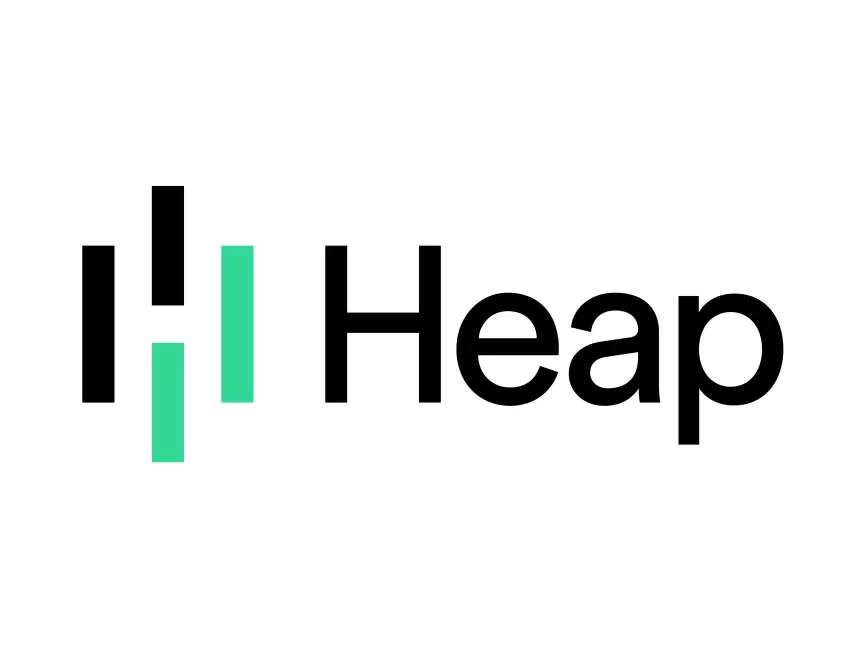Choosing the right marketing analytics tool is like picking a new smartphone. You want something powerful but easy to use, something that fits your daily needs without overwhelming you with bells and whistles you’ll never use. In the digital marketing world, Optimizely and Heap stand out as two of the top contenders, each with its unique strengths and approach to data analytics. But which one is the best fit for you and your business? Let’s dive into the details, compare, and contrast to help you make an informed decision.
| Optimizely | Heap |
|---|---|
 |  |
| G2 Score – 4.5 out of 5 stars | G2 Score – 4.4 out of 5 stars |
| TrustRadius Score – 8.7 out of 10 | TrustRadius Score – 8.2 out of 10 |
Ease of Use: Simplifying Your Data Analysis Journey
In a world where time is money, and simplicity is the ultimate sophistication, how do Optimizely and Heap stack up in terms of ease of use? After all, the best tool is the one you actually enjoy using.
The User Interface: Your Daily Dashboard
When you log into Optimizely, you’re greeted with a clean, intuitive interface. It’s designed with marketers and product managers in mind, aiming to make the setup and execution of experiments as straightforward as possible. The platform guides you through creating A/B tests, multivariate tests, and personalization campaigns with a series of simple steps. While Optimizely is powerful under the hood, it doesn’t overwhelm you with complexity at first glance.
Heap takes a slightly different approach. It focuses on automatic data capture, meaning it starts collecting data from your website or app from the moment you integrate it, without requiring you to set up specific tracking for every event you’re interested in. This can be a double-edged sword. On the one hand, it ensures you’re not missing out on valuable data because you forgot to track a particular interaction. On the other hand, it can lead to a lot of noise, with heaps (pun intended) of data that might not all be relevant to your current analysis needs.
Setting Up and Getting Started
For many, the setup process is a critical factor. Optimizely requires some initial configuration, including integrating its SDK into your website or app. This might need a helping hand from your development team, but it’s a one-time effort. Once set up, creating and managing experiments is in the hands of the marketer.
Heap’s promise of automatic event tracking shines here. The setup is as simple as adding a tracking code to your site, and you’re good to go. There’s no need to define events upfront or modify code each time you want to track something new. This ease of setup is a significant win for teams looking for quick starts and insights.
Learning Curve and Support
No tool is without its learning curve, but it’s the climb that makes the view worth it. Optimizely offers a comprehensive knowledge base, online training, and a community forum to help users get the most out of their platform. Its support team is also praised for being responsive and helpful, which can significantly ease the learning process.
Heap also provides a wealth of resources, including a help center, webinars, and a dedicated customer success team for enterprise accounts. The automatic data capture approach means you’ll spend less time on setup and more on analysis, but it might require a shift in how you think about data collection and analysis.
The Verdict on Ease of Use
Choosing between Optimizely and Heap on ease of use grounds depends on your team’s makeup and your specific needs. If you prefer a tool that guides you through the experimentation process with a hands-on approach, Optimizely might be your match. On the other hand, if you value the ability to capture a wide array of data automatically and are willing to sort through it for insights, Heap could be the way to go.
Integration Capabilities: Connecting Your Digital Ecosystem
In the digital age, your marketing analytics tool shouldn’t be an island but rather a hub connected to various parts of your digital ecosystem. How well a tool integrates with other software—be it your CRM, email marketing platform, or advertising networks—can significantly impact its usefulness. Let’s see how Optimizely and Heap fare in this crucial area.
Optimizely: A Seamless Part of Your Stack
Optimizely has been around long enough to understand the importance of playing well with others. It boasts a robust set of integrations with popular content management systems, ecommerce platforms, and data management tools. Whether you’re using Shopify for your online store, WordPress for your content site, or Salesforce for your customer data, Optimizely can integrate smoothly, allowing you to tailor experiences based on data from these platforms.
Moreover, Optimizely’s REST API and webhooks offer flexibility for custom integrations, meaning you can connect it to virtually any part of your tech stack with some development effort. This is particularly appealing for larger enterprises with bespoke systems or specific integration needs that go beyond the most common platforms.
Heap: The Automatic Integrator
Heap’s approach to integration is slightly different, emphasizing ease and speed. With its automatic event tracking, Heap captures interactions from your website or app from the get-go, making this data readily available for analysis. When it comes to connecting with other tools, Heap offers direct integrations with a variety of platforms, including sales and marketing automation tools, email services, and customer support platforms.
One of Heap’s strengths is its ability to integrate with tools like Salesforce and Marketo, pulling in valuable customer data that can be used to enrich your analytics. This means you can analyze not just how users behave on your site but also incorporate insights from their interactions across your entire digital footprint. Additionally, for any tools that Heap doesn’t natively integrate with, its API provides the means to create custom connections, offering flexibility for those who need it.
The Verdict on Integration Capabilities
The choice between Optimizely and Heap in terms of integration capabilities boils down to your existing tech stack and how you plan to use your marketing analytics tool. Optimizely’s wide array of integrations and the flexibility of its API make it a strong contender for businesses with complex integration needs or those that rely heavily on customization.
Heap, with its emphasis on ease of use and automatic data capture, offers a streamlined integration experience that can be particularly beneficial for businesses looking to quickly connect their analytics to other tools in their stack without extensive custom development. In conclusion, if your priority is deep, customizable integrations that can adapt to a complex digital ecosystem, Optimizely might be your best bet. If you prefer a tool that offers quick, straightforward integrations to enhance your analytics without significant development resources, Heap could be the ideal choice.
Data Analysis and Insights: From Information to Action
In the realm of digital marketing, data is king—but only if you can interpret it correctly. Both Optimizely and Heap offer powerful analytics capabilities, but they do so in ways that reflect their unique philosophies and strengths. Let’s dive into how each tool helps you understand your data and extract valuable insights.
Optimizely: Experimentation at Its Core
Optimizely has made a name for itself through its focus on experimentation. Its platform is designed to make it easy to test hypotheses, compare variations, and ultimately understand what changes can lead to improved outcomes. The tool’s analytics capabilities are closely tied to its testing features, providing detailed reports on the performance of different experiments.
With Optimizely, you can dive deep into the data from your A/B tests, multivariate tests, and personalization efforts. It offers clear, understandable reports that highlight key metrics like conversion rates, engagement scores, and statistical significance. This focus on experimentation analytics means that Optimizely is particularly strong in delivering insights that are directly tied to specific actions or changes on your site or app.
Moreover, Optimizely allows for segmentation of data, enabling you to drill down into how different user groups respond to changes. This can be incredibly valuable for tailoring experiences and understanding the nuances of your audience’s behavior.
Heap: Automatic and Comprehensive Data Capture
Heap’s approach to data analysis and insights is rooted in its automatic event tracking. By capturing every interaction from the get-go, Heap provides a comprehensive dataset that you can mine for insights. This wealth of data means you can analyze user behavior in detail, uncovering patterns and trends that might not be apparent from more limited datasets.
The platform offers a range of analytical tools that allow you to segment users, track journeys across your site or app, and identify key conversion points. Heap’s interface is designed to make it easy to explore your data, build custom reports, and visualize user interactions without needing to write complex queries.
One of the standout features of Heap is its ability to retroactively analyze data. Since it captures everything from the start, you can formulate new hypotheses and test them against historical data. This is a powerful feature that frees you from needing to predict in advance what you might want to analyze.
The Verdict on Data Analysis and Insights
When it comes to turning data into insights, both Optimizely and Heap offer compelling capabilities, but they cater to slightly different needs. Optimizely is ideal for businesses that are focused on experimentation and want analytics that are closely tied to testing and optimization efforts. Its reports are geared towards understanding the impact of specific changes, making it a powerful tool for iterative improvement.
Heap, with its comprehensive data capture and flexible analysis tools, is suited for those who want to explore their data without constraints. It’s particularly valuable for businesses that are still defining their analytical strategies or those that want the ability to ask new questions of their data without having to set up new tracking for each query.
Choosing between Optimizely and Heap for data analysis and insights depends on your approach to digital marketing. If experimentation is at the heart of your strategy, Optimizely’s focused analytics will serve you well. If you’re looking for the freedom to explore a wide range of questions and behaviors, Heap’s comprehensive data and flexible tools might be the better choice.

Related: Check out our free SEO suite

Customer Support and Learning Resources: Empowering Users for Success
Whether you’re a seasoned data analyst or a marketer looking to glean insights from your campaigns, the support and resources provided by a tool can make a big difference in your ability to utilize it effectively. Let’s see how Optimizely and Heap support their users through customer service and educational materials.
Optimizely: Dedicated Support and Comprehensive Education
Optimizely is known for its strong customer support structure, offering various levels of support depending on the plan you choose. Higher-tier plans include dedicated account managers who can provide personalized support and strategic advice, making it easier for large businesses to integrate and make the most out of Optimizely’s capabilities. For all users, Optimizely offers a robust help center, complete with guides, tutorials, and FAQs to help troubleshoot issues or learn how to use the platform more effectively.
Furthermore, Optimizely invests in the education of its users beyond the basics. It hosts webinars, workshops, and training sessions that cover not only tool-specific knowledge but also best practices in experimentation and personalization. This approach to customer education helps users not just use the tool, but also become better marketers and product managers.
Heap: Accessible Support and a Focus on User Education
Heap provides support through multiple channels, including email, chat, and an extensive knowledge base. The platform prides itself on its user-friendly approach, and this extends to its support services. All users have access to Heap’s help center, which contains articles, guides, and video tutorials designed to help users navigate and utilize the platform effectively.
In addition to reactive support, Heap offers proactive education resources aimed at helping users understand the power of data analysis. This includes a series of webinars and a blog that regularly features insights on analytics best practices, case studies, and tips for leveraging Heap to its fullest potential. Heap’s approach is about empowering users with the knowledge to explore their data independently, fostering a culture of data-driven decision-making.
The Verdict on Customer Support and Learning Resources
Both Optimizely and Heap excel in providing their users with the support and resources needed to succeed. The choice between the two will largely depend on your organization’s needs and preferences.
If you’re looking for personalized support and are willing to invest in a tool that offers dedicated account management and in-depth educational opportunities, Optimizely is a strong contender. Its comprehensive approach to customer support and education is well-suited for businesses that want to deeply integrate experimentation into their digital strategy.
Heap, with its accessible support and focus on user education through online resources, is ideal for teams that prefer self-service support complemented by a wealth of educational content. Heap’s resources are designed to help users become proficient in data analysis, making it a great choice for businesses that value independence and want to cultivate a data-centric culture.
In conclusion, both Optimizely and Heap provide robust support and learning resources, but your choice should align with your team’s support preferences and how you wish to engage with educational content to maximize your use of the platform.
Pricing and Value for Money: Balancing Cost with Capabilities
The cost of a marketing analytics tool can vary widely, and understanding what you’re getting for your investment is key. Both Optimizely and Heap offer powerful analytics capabilities, but their pricing structures and the value they deliver can influence your decision.
| Optimizely | Optimizely does not publicly list detailed pricing for its services, including experimentation and personalization products. Interested parties must contact them directly for a custom quote. |
| Heap | Heap offers both Free and custom-priced Enterprise plans. The Free plan supports up to 10,000 sessions per month, while Enterprise plan pricing is based on the volume of data and specific feature requirements. |
Optimizely: Customized Pricing for Tailored Solutions
Optimizely adopts a customized pricing model, which means that the cost is tailored to the specific needs and scale of your business. This approach allows for a lot of flexibility, as you can work with Optimizely to configure a package that includes the features and level of support your business requires. While this custom pricing can make it difficult to compare costs directly without engaging in a sales process, it also means you’re not paying for features you don’t need.
The value in Optimizely’s pricing comes from its comprehensive suite of tools for experimentation and personalization. Businesses focused on rigorous testing and optimization campaigns may find the investment justified by the potential for significant improvements in user experience and conversion rates. Additionally, larger enterprises or those with complex requirements may benefit from the customized approach, as it ensures the solution is precisely aligned with their needs.
Heap: Transparent Pricing with Scalable Options
In contrast to Optimizely, Heap offers a more transparent and scalable pricing structure. Heap provides a free plan with basic features suitable for small businesses or those just starting with analytics. For more advanced features and greater data capacity, Heap has tiered pricing plans that cater to different sizes of businesses and levels of usage.
Heap’s pricing model makes it easier for businesses to understand what they’re signing up for and to scale their use of the tool as they grow. This transparency is valuable for startups and SMEs that need to carefully manage costs while still accessing powerful analytics capabilities. The value for money with Heap lies in its automatic data collection and comprehensive analytics features, which can empower businesses to make data-driven decisions without a significant upfront investment.
The Verdict on Pricing and Value for Money
The decision between Optimizely and Heap, from a pricing and value perspective, largely depends on your business’s size, budget, and specific analytics needs. Optimizely’s customized pricing model is suited for larger enterprises or businesses with unique requirements that can benefit from a tailored solution, offering a potentially high ROI for companies looking to invest in advanced experimentation capabilities.
Heap, with its transparent and scalable pricing, presents a compelling option for startups, SMEs, and businesses looking for an entry point into comprehensive analytics without a hefty initial investment. Its value shines through the ease of setup, automatic data collection, and the ability to grow with your business.
When considering these tools, it’s crucial to weigh the cost against the potential to drive growth, improve user experience, and make more informed decisions. Both Optimizely and Heap offer unique value propositions; the right choice will align with your financial considerations and strategic goals.
Scalability and Flexibility: Growing with Your Business
As businesses evolve, so do their data analysis needs. A tool that fits perfectly at one stage may become limiting as the amount of data increases or as the business expands into new areas. Let’s examine how Optimizely and Heap cater to growing businesses in terms of scalability and flexibility.
Optimizely: Designed for Enterprise Growth
Optimizely’s platform is built with scalability in mind, particularly catering to the needs of large enterprises or rapidly growing companies. Its infrastructure is designed to handle high volumes of traffic and complex experimentation scenarios without sacrificing performance. This makes Optimizely a strong candidate for businesses that anticipate significant growth or those that already operate at scale.
In terms of flexibility, Optimizely’s wide range of features and customization options allow businesses to tailor the tool to their specific needs. Whether it’s through creating sophisticated experimentation campaigns, leveraging its extensive integration capabilities, or utilizing its APIs for custom solutions, Optimizely provides the tools necessary to adapt to changing business landscapes.
Heap: Automating Data Analysis at Scale
Heap offers a different approach to scalability and flexibility, emphasizing automatic data capture and ease of use. By automatically tracking all user interactions, Heap ensures that businesses don’t miss out on valuable insights as they grow. This automatic data collection is inherently scalable, as it requires no additional setup to track new events or user actions, making it ideal for fast-growing startups and SMEs.
Heap’s flexibility lies in its ability to let users define custom events and segments after the data has been collected. This retrospective analysis capability means businesses can adapt their analysis strategies without needing to alter their tracking setup. As your business evolves, Heap’s data collection continues unabated, ensuring you have the insights needed to inform your decisions.
The Verdict on Scalability and Flexibility
Choosing between Optimizely and Heap based on scalability and flexibility depends on the nature of your business growth and how you envision using data analytics in the future. Optimizely is well-suited for larger enterprises or businesses with complex experimentation needs, offering robust infrastructure and the ability to customize extensively as you grow.
Heap, with its automatic data collection and flexible analysis options, is a strong option for businesses that value simplicity and efficiency in their analytics tools. Its model is particularly appealing for fast-growing companies that want to ensure comprehensive data capture without constant updates to tracking configurations.
In essence, if your growth strategy involves scaling up sophisticated testing and personalization efforts, Optimizely’s enterprise-focused capabilities provide the necessary support. If you’re looking for a tool that grows with you by simplifying data collection and analysis, allowing you to focus on insights rather than maintenance, Heap’s approach could be the better fit.
Conclusion
In conclusion, choosing between Optimizely and Heap for your marketing analytics needs boils down to understanding your specific business requirements, growth trajectory, and how you plan to utilize data. Optimizely shines for businesses looking for a robust, enterprise-grade solution with powerful experimentation capabilities and customizable features, making it ideal for large organizations or those with complex data analysis needs.
On the other hand, Heap offers a compelling proposition with its automatic data collection and flexible analysis tools, suited for fast-growing companies and those seeking simplicity and efficiency in their analytics practices. Both platforms offer distinct advantages in terms of ease of use, integration capabilities, data insights, customer support, pricing, scalability, and flexibility. Ultimately, your choice should align with your current needs and future goals, ensuring that your analytics tool not only fits your business today but can also scale and adapt as you grow.
Read Next:
- How to Determine the Right SEO Budget for Your Startup
- The Importance of Startup SEO Budgeting for Business Growth
- Using Google Autocomplete for Startup Keyword Insights
- Keyword Research for Startup Webinars: Driving Registrations
- 31+ Top Social Media Management tools Compared! (2023)






















Comments are closed.